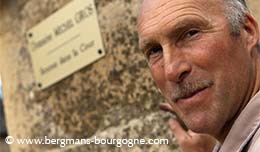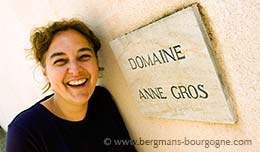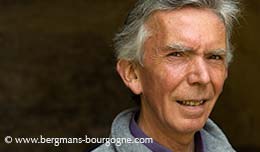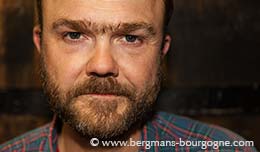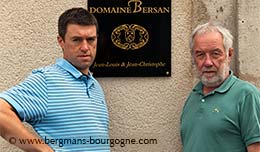
ierre de Benoist at Domaine de Villaine is not your average Burgundian winegrower. In his world the aligoté grape rules, not the chardonnay and the pinot as elsewhere in Burgundy.
– I use my experience from the aligoté for the chardonnay and the pinot noir, he says. Especially for the chardonnay. The chardonnay is not my reference. The aligoté is.
Bouzeron, at the top of the Côte Chalonnaise, is the only village appellation for the aligoté grape. It is a very small appellation. Only 44 hectares. Meursault covers 394 hectares.
 – My uncle and my aunt bought this domaine in 1971, says Pierre de Benoist. At the time it was a small domaine, just eight hectares. When I arrived here in 2000 it had grown to cover 19.5 hectares. Today we have 21 hectares. Ten hectares are aligoté.
– My uncle and my aunt bought this domaine in 1971, says Pierre de Benoist. At the time it was a small domaine, just eight hectares. When I arrived here in 2000 it had grown to cover 19.5 hectares. Today we have 21 hectares. Ten hectares are aligoté.
The uncle and aunt in question are Aubert and Pamela de Villaine. When Aubert de Villaine came to Burgundy to take charge of Domaine de la Romanée-Conti in 1971 he did not want to both work and live in the Côte de Nuits.
– When they started looking for a place to live they were not necessarily looking for a place that included vines, says Pierre de Benoist. Then they discovered the village of Bouzeron. It is a very small village – 150 people live here. There are probably more cats and dogs than people. My uncle was surprised to find aligoté of such quality as he did here in Bouzeron.
 – Their first vintage was in 1973. My aunt started to work organically in the garden in 1982. In 1986 it was extended to include the whole domaine.
– Their first vintage was in 1973. My aunt started to work organically in the garden in 1982. In 1986 it was extended to include the whole domaine.
Pierre de Benoist has a passion for the Côte Chalonnaise. He feels it is important to focus on this part of Burgundy. It is the identity of the domaine. But, however, recently there has been an exception to this rule when he bought a tiny piece – 0.44 hectares – of Santenay premier cru Passetemps. The first vintage was 2011, producing eight barrels (about 2400 bottles).
 – Santenay is not very far from here, he says. Just six kilometres. My ancestor Jacques-Marie Duvault-Blochet (who bought Domaine de la Romanée-Conti in 1869) had about 133 hectares of vines, including Romanée-Conti, La Tâche, Richebourg etc. And he also had some Santenay Passetemps. It was, like all the other wines of the domaine at the time, vinified in Santenay.
– Santenay is not very far from here, he says. Just six kilometres. My ancestor Jacques-Marie Duvault-Blochet (who bought Domaine de la Romanée-Conti in 1869) had about 133 hectares of vines, including Romanée-Conti, La Tâche, Richebourg etc. And he also had some Santenay Passetemps. It was, like all the other wines of the domaine at the time, vinified in Santenay.
– I found it amusing when I was offered this little piece of Santenay Passetemps. In a way things had come full circle. But my main idea is to remain in the Côte Chalonnaise and develop the domaine here.
Pierre de Benoist himself comes from a wine-making family, Domaine du Nozay in Sancerre. Growing up he had no wish to work with wine. Instead he went to Paris to study law.
 – While studying I worked for a company called Les Domaines Qui Montent selling wine in various parts of Paris. It was wonderful to be in Paris. Like New York, Madrid or London, Paris is a place where you can taste a lot of wine, and when you’re still curious that is wonderful.
– While studying I worked for a company called Les Domaines Qui Montent selling wine in various parts of Paris. It was wonderful to be in Paris. Like New York, Madrid or London, Paris is a place where you can taste a lot of wine, and when you’re still curious that is wonderful.
– My uncle, Aubert de Villaine, called me in 1998 asking me to manage the domaine in Bouzeron. He has several nephews, but he felt I was the one best suited for managing a domaine like this.
– Initially I said no. But unfortunately, for me, I am the son of a winegrower. Having been exposed to the Sancerre terroir for many years I had been ”contaminated” by it. So when I got the question from my uncle it was as if something inside me started to wake up.
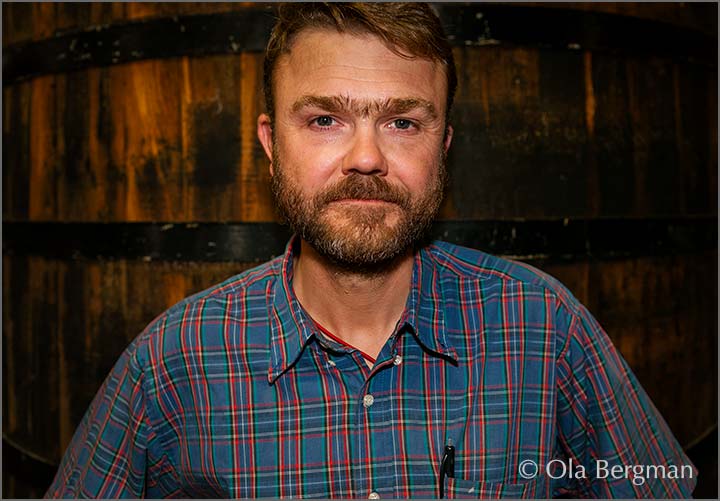 The following year the whole idea started making sense to him and in 2000 Pierre de Benoist was once again asked by his uncle to come to Bouzeron. This time he went and this happened at a time when he felt he wanted to work closer to nature.
The following year the whole idea started making sense to him and in 2000 Pierre de Benoist was once again asked by his uncle to come to Bouzeron. This time he went and this happened at a time when he felt he wanted to work closer to nature.
 – Here in Bouzeron I discovered a beautiful place, he says. A tiny village and an unusual wine. Immediately when I tasted the wine I felt similarities with the sauvignon in Sancerre.
– Here in Bouzeron I discovered a beautiful place, he says. A tiny village and an unusual wine. Immediately when I tasted the wine I felt similarities with the sauvignon in Sancerre.
Bouzeron is the only place where the aligoté is grown up on the slopes. Elsewhere in Burgundy the aligoté has been pushed out from the best locations by the chardonnay and the pinot noir.
– In the past the aligoté was grown in the best locations alongside the chardonnay and the pinot noir, says Pierre de Benoist. But the phylloxera crisis changed all that. Today you can find a few growers who still use the best plots for their aligoté. Jean-Hugues Goisot in Saint-Bris-le-Vineux makes a wonderful aligoté. You also have Frédéric Lafarge in Volnay, Clavelier in Vosne-Romanée and Laurent Ponsot in Morey-Saint-Denis.
 In Bouzeron the top of the slopes are used for the aligoté. The soil, a mix of limestone and some clay, is not very deep and is ideal for the aligoté. Lower down, where there is more clay, is the land used for chardonnay and pinot noir. But since the village appellation of Bouzeron only allows aligoté the appellation used for these wines is the regional Bourgogne Côte Chalonnaise.
In Bouzeron the top of the slopes are used for the aligoté. The soil, a mix of limestone and some clay, is not very deep and is ideal for the aligoté. Lower down, where there is more clay, is the land used for chardonnay and pinot noir. But since the village appellation of Bouzeron only allows aligoté the appellation used for these wines is the regional Bourgogne Côte Chalonnaise.
– Ten years ago I created a nursery for aligoté here in Bouzeron, explains Pierre de Benoist. I want to maintain the massal selection of the aligoté from Bouzeron. The clonal selection produces identical vines and it has been created to produce a lot of wine. It was created with the Bourgogne Aligoté and the base wine for the Crémant de Bourgogne in mind.
– In Bouzeron this is not what we are looking for. The aligoté here is referred to as the golden aligoté, as opposed to the green aligoté used everywhere else in Burgundy. I try to convince all the other growers in Bouzeron to use the golden aligoté in order to maintain an homogenous expression of the Bouzeron terroir.
© 2013 Ola Bergman










